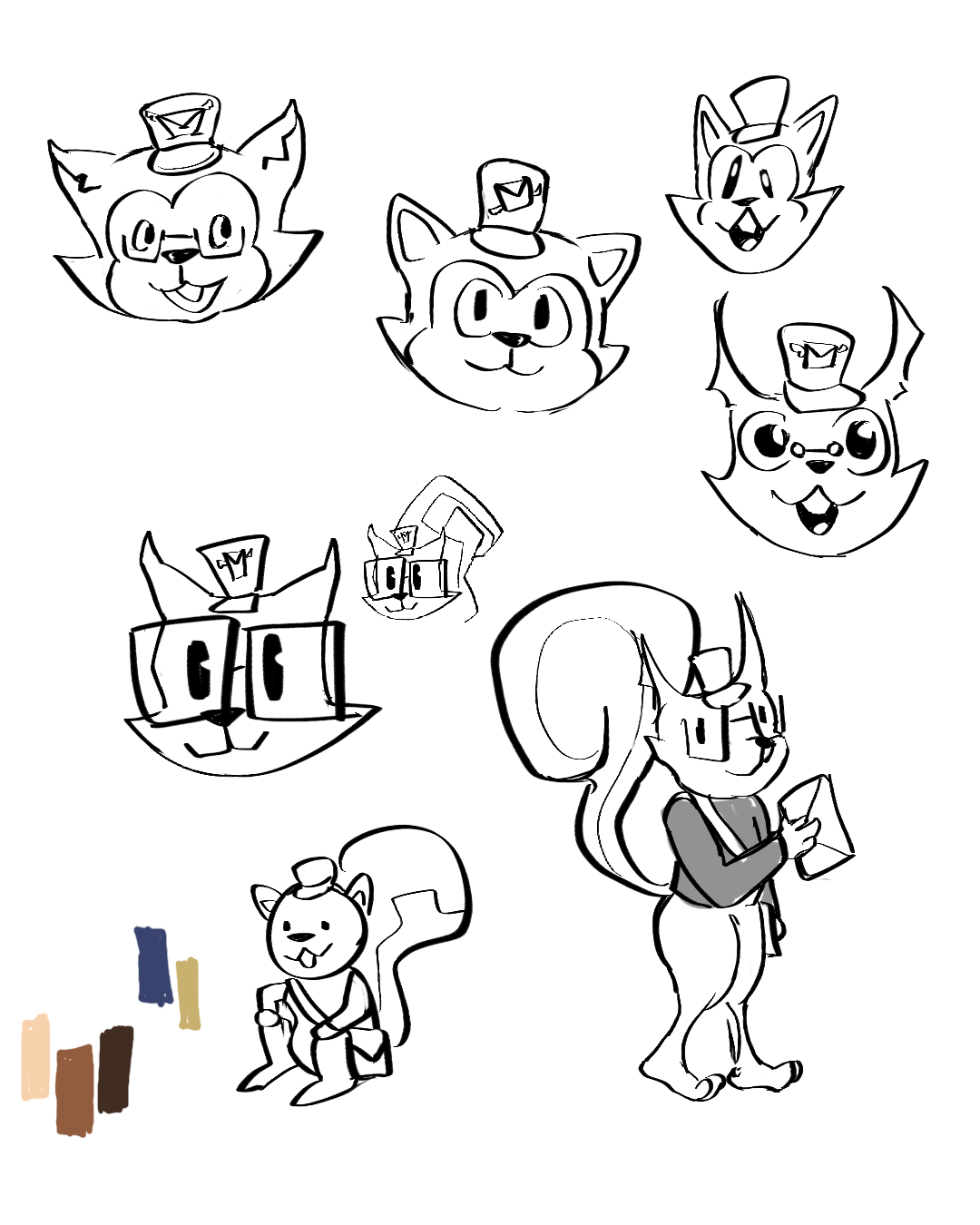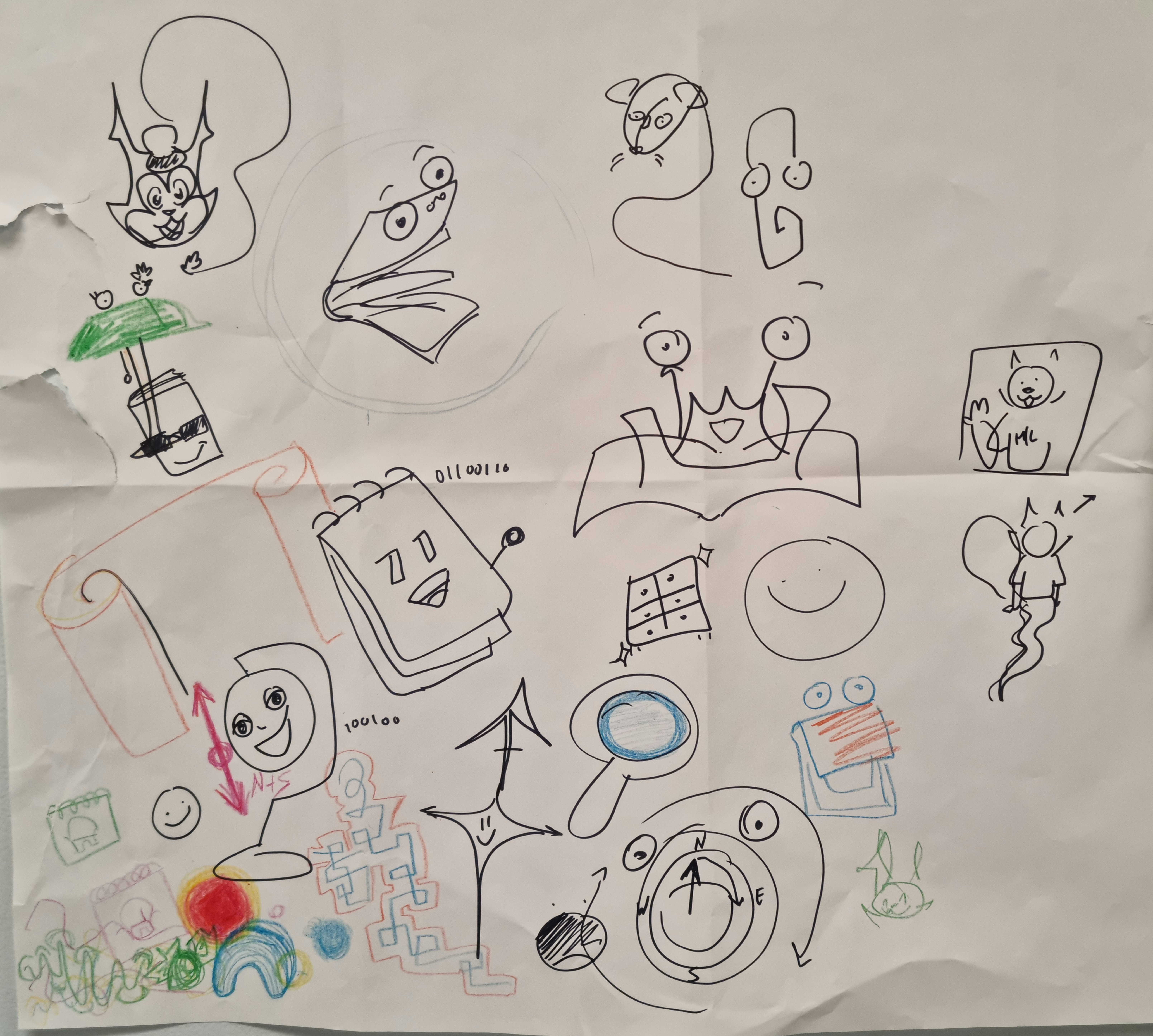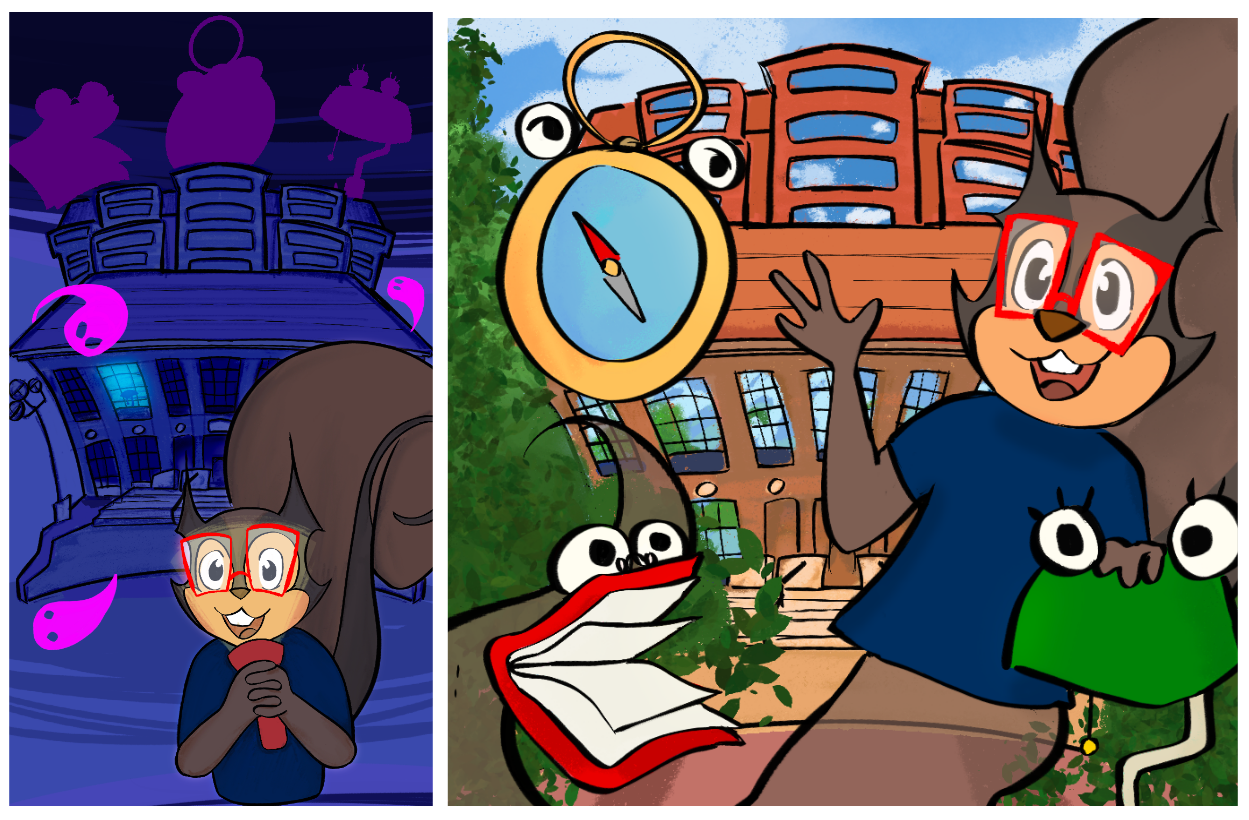Though I plan to be a writer by trade, as evidenced by my English major and translation studies minor, I consider myself a very passionate hobbyist illustrator. When I have time to unwind, I often find myself in a two-hour drawing session while a humorously narrated playthrough of a video game plays in the background. These interests are what made this project appeal to me so greatly. That and my previous experience working with the library; you get to a point where knowing so much about fun resources makes it near impossible to not get excited about sharing them with others. Finding out there was a project where I could help craft a video game for that very goal was, therefore, very exciting.
Our project was to create a prototype for a video game about the Hatcher Library that would teach students unfamiliar with its layout and contents how to navigate it and what is offered. While I worked on some aspects of the coding that makes the game tick, my main focus was the writing and art direction of the project. Though I am a writer, my expertise has always been essays and the odd stint in poetry; never dialogue, much less for a video game. More to the point, I am often over-verbose in my writing, yet I was aiming for the exact opposite with this script: because we want the game to be enjoyable, yet educational, we want to make sure everything is as simply explained as possible. We can’t do that if characters are going off on monologues about their rich backstories in the middle of an explanation of how call numbers work. On the other hand, the characters’ dynamics could not be so flat as to grant the same entertainment as an itemized list of all the information we want to convey with our game.
To achieve this, I studied up on my favorite simplistic-style game’s scripts — how are lines delivered? What is their average length? In what frequencies do moments of levity appear? Then, after writing my script imitating that tone, I went back over it trying to economize words where I could. Though I didn’t develop that skill as much as I would have liked then, later on, when drafting correspondence with potential playtesters, Denise (one of our mentors) and I had a meeting where we sat down and went through one of my drafted emails together. I saw in real-time the alterations she had made and she verbalized the thought process behind her cuts and modifications. Direct writing has always been difficult for me, but I see now a lot of that is because I try to write in someone else’s voice, so my message gets mangled and the writing sounds stiff. With the way Denise helped me develop, I now write as I normally would, then edit it down considerably when I can see the full picture, singling out the key points and doing away with the rest. I can feel this is a skill that will serve me well in future.
Now for the art side of things: from the very first week of work, I became so impassioned by the opportunity to craft a story with visual elements, I immediately started working on sketches for the characters. In our first meeting, the idea of a squirrel guide character was tossed out, and I found myself unable to stop drawing what the little companion would look like. I made almost a dozen designs in just about two weeks, each in a style different than the last. Though I was enjoying myself immensely, I knew that I could not keep drawing variations to my heart’s content as not only would it lead nowhere, but I needed to find a coherent look for the entire game’s design, and that includes how the characters look.

Sampling of squirrel variations
As Shao-Chi, my fellow intern, and I kept developing the game’s narrative, more characters came into the mix. During our brainstorming meeting, I used a giant paper pad to track ideas for a visual component that would go along with the ideas we had suggested. After we settled on three ghosts for the game, I went and drew them all using similar design principles.

First ghost sketches
The issue then arose when it came to pairing them to a squirrel. Because we would be using Figma, a vector-based application, I didn’t want to use rendered images of the characters for fear of pixelation. This means that even after I finished a character’s sprite, I would need to trace it over using Figma. That is a skill I had to develop during this project, as I had never done vector art before. After a few days of trial with the only squirrel version I had a full reference sheet for, I had those squirrel vectors ready to go. However, because of the story change, I needed a new outfit for the character and a new full-body pose as well. This presented me with the opportunity to ditch this design in favor of another, preferred squirrel variation from my sheet of many. However, the squirrel I preferred did not fit in with the ghosts’ style as well as the vectored squirrel did, despite the latter’s faults. I had to learn that sometimes we need to let go of personal preferences for what is best for the project overall. In this case, the best thing was to go with a design I did not feel as much for, but fit our game’s mood, tone, and overall style significantly much more than my first pick.
In the end, I ended up loving the new squirrel, too. In general, I’m really happy with the characters’ look. This made it much easier to create the start and end screens, especially as I could mess around with the style a little for those special screens. I acquired a significant amount of experience in a form of digital art (my preferred mode of work) I had no familiarity nor knowledge with. I feel it has opened significant avenues for me for both personal projects and potentially further professional applications of what I still consider a hobby. Getting to apply a talent I feel passionate about but never seriously considered employing in a vocational setting was a very enlightening experience.

Hatcher Haunts start and end screens
This project has meant a lot to me. I’ve grown very fond of what we’ve managed to accomplish, especially knowing of all the hurdles we encountered along the way. It gives me great joy to know that the impact this project has had on me will be turned back unto future users when the game is finalized and implemented, an impact I have already noted in playtesters. It’s very heartening to see people laugh at your jokes and comment on the cuteness of a design when you’ve been through all it took to get there. I am very proud of our work and I can’t wait until it is ready to be shared with the world.